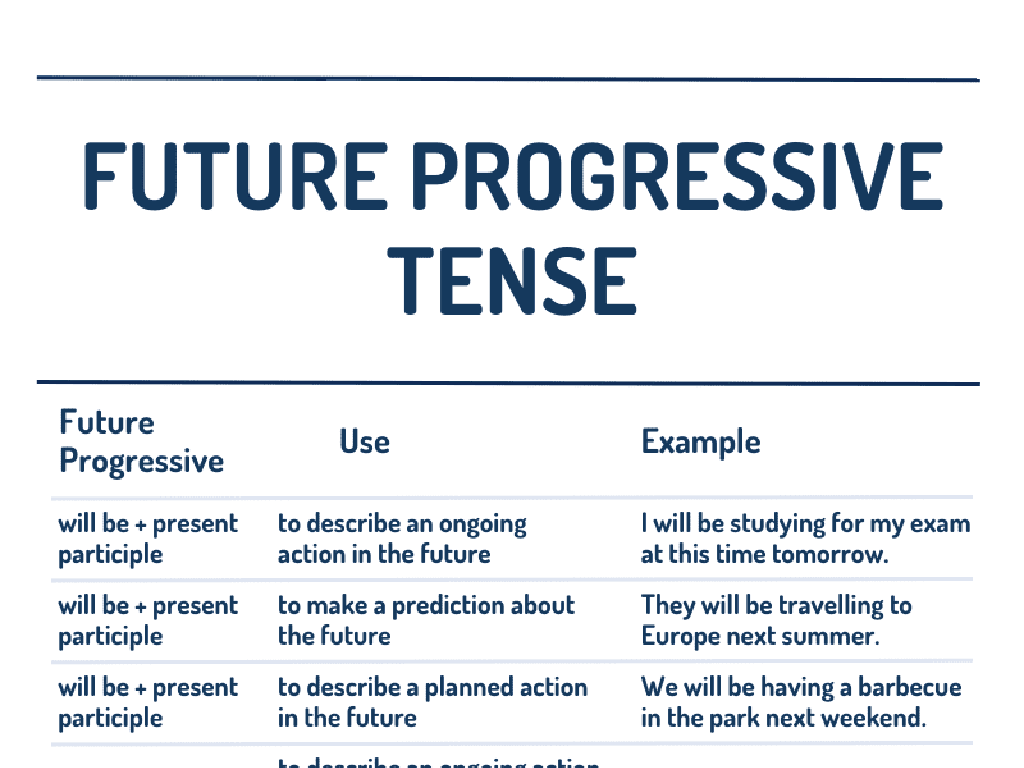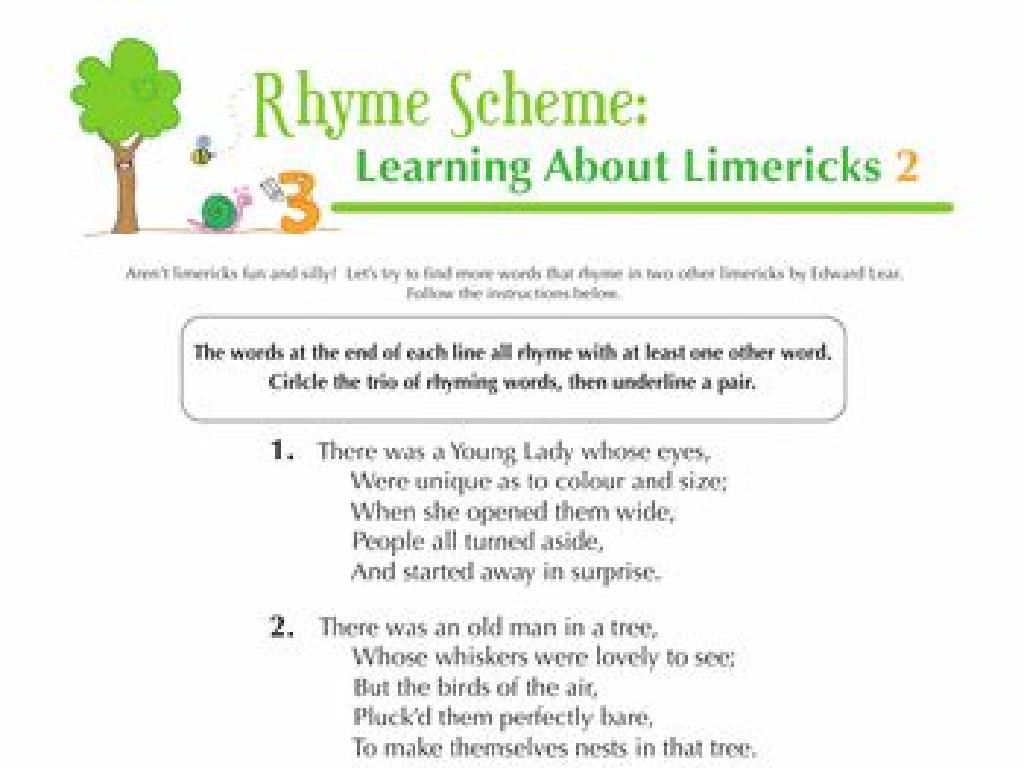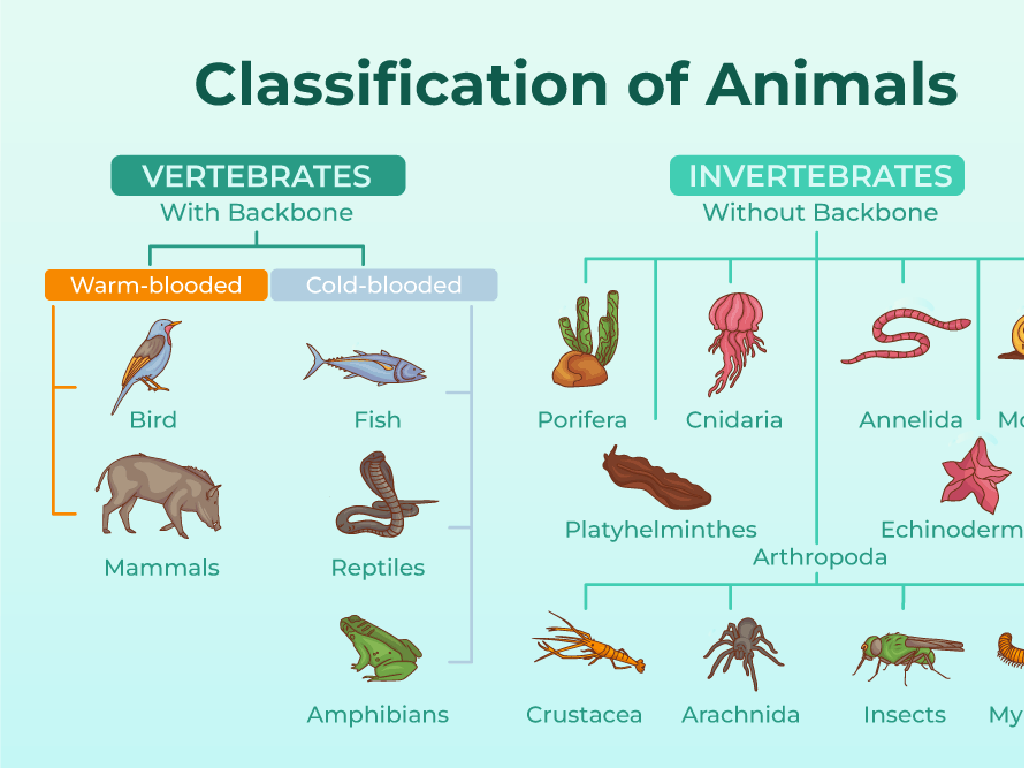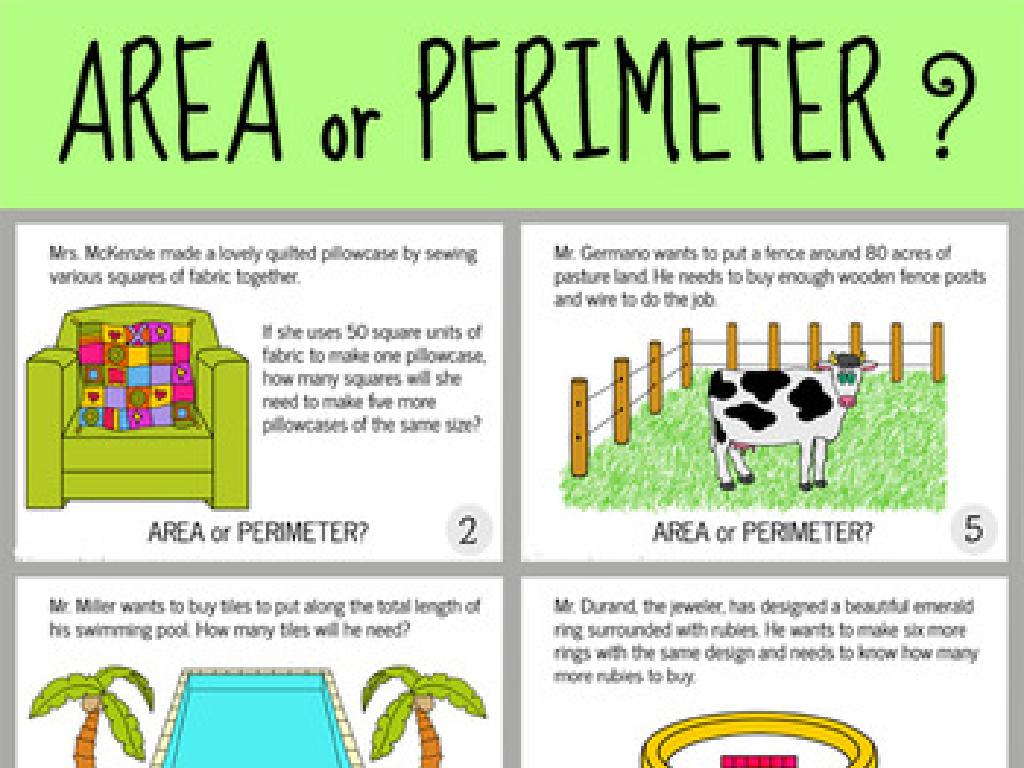Fractions Of A Number: Word Problems
Subject: Math
Grade: Fourth grade
Topic: Multiply Fractions And Whole Numbers
Please LOG IN to download the presentation. Access is available to registered users only.
View More Content
Today’s Adventure: Fractions of a Number
– Fractions represent parts of a whole
– Like a pizza sliced into pieces, each piece is a fraction of the pizza
– Multiplying fractions with whole numbers
– If you have 3 pizzas and eat 1/2, you’ve eaten 3 x 1/2 = 1 1/2 pizzas
– Real-world fraction examples
– Using fractions when cooking or in money, like 1/4 cup sugar or 3/4 dollar
– Practice with word problems
– Solve problems involving fractions in scenarios like sharing and shopping
|
This slide introduces students to the concept of fractions as parts of whole numbers and how to multiply them with whole numbers. Begin by explaining fractions with tangible examples, such as slices of pizza, to illustrate parts of a whole. Then, demonstrate how to multiply a fraction by a whole number using real-life situations, like eating portions of food. Provide examples that children encounter daily, such as measurements in recipes or money, to show fractions in action. Conclude with word problems that apply these concepts, encouraging students to visualize and solve problems involving fractions in everyday contexts. This will help solidify their understanding and make the concept of fractions more relatable and less abstract.
Understanding Fractions
– A fraction is part of a whole
– Numerator and denominator explained
– Top number (numerator) shows how many parts we have. Bottom number (denominator) shows how many equal parts the whole is divided into.
– Fractions in daily life
– Examples: 1/2 of a pizza, 3/4 of a gallon of milk
– Practice with word problems
– Solve problems using fractions from scenarios we might encounter every day
|
This slide introduces the concept of fractions to fourth-grade students. Begin by explaining that a fraction represents a part of a whole, which could be anything from a single object to a group of items. Clarify the roles of the numerator and the denominator in a fraction. Provide relatable examples of fractions that students might encounter in their daily lives, such as dividing a pizza among friends or measuring ingredients for a recipe. Conclude with an emphasis on the importance of understanding fractions to solve word problems, which will be practiced in class. Encourage students to think of their own examples of fractions they have seen or used outside of school.
Multiplying Fractions with Whole Numbers
– Multiply fraction by whole number
– To multiply, use the numerator times the whole number
– Find a part of a number using multiplication
– Multiplication helps find a fraction of a number
– Visual example: 1/2 of 8
– 1/2 of 8 equals 4, as if you split 8 into 2 equal parts
– Visual example: 3/4 of 12
– 3/4 of 12 equals 9, like taking 3 parts out of 4 equal parts of 12
|
This slide introduces the concept of multiplying fractions by whole numbers, which is a foundational skill in understanding fractions. Start by explaining that multiplying a fraction by a whole number is like finding ‘so many’ parts of that number. Use visual aids to show 1/2 of 8 by dividing 8 into two equal parts and taking one, which equals 4. Similarly, show 3/4 of 12 by dividing 12 into four equal parts and taking three, which equals 9. These visual examples will help students grasp the concept of finding a part of a whole. Encourage students to draw their own pictures to solve similar problems and to practice with different fractions and whole numbers.
Word Problems: Fractions of a Number
– Identify the fraction in the problem
– Look for a part of a whole, like 1/2 of a pizza
– Find the whole number involved
– This is usually a countable amount, like 8 pizzas
– Comprehend the question’s goal
– What does the problem want you to find out?
– Recognize key words for fractions
– Words like ‘of’, ‘part’, ‘portion’ indicate fractions
|
This slide is aimed at helping students approach word problems involving fractions by breaking down the problem into manageable steps. Start by identifying the fraction, which represents a part of a whole, and the whole number, which is often a countable quantity. Next, ensure students understand the question by looking for what it’s asking them to find; this could be a total, a difference, etc. Highlight key words that typically signal the presence of fractions in word problems, such as ‘of’, ‘part’, ‘portion’, or ‘slice’. These steps will guide students to correctly set up and solve the problem. In class, work through several examples together and discuss the different key words that can be used in fraction word problems.
Solving Fraction Word Problems
– Steps to tackle fraction problems
– Understand the problem, visualize it, and identify the fraction and the whole number involved.
– Example: Emma’s pizza slices
– If 1/4 of 8 slices are eaten, how many slices is that?
– Discuss the solution method
– Practice with similar problems
– Try problems like ‘If John reads 1/3 of 9 chapters, how many chapters does he read?’
|
This slide is aimed at guiding students through the process of solving word problems involving fractions and whole numbers. Start by reading the problem carefully and understanding what is being asked. Visualize the problem; for example, picture the pizza and its slices. Then, identify the fraction given in the problem (1/4 in this case) and the total number of items it refers to (8 slices of pizza). Multiply the fraction by the whole number to find the answer (1/4 of 8 equals 2). Discuss the solution step-by-step, ensuring students follow the logic and process. Encourage them to ask questions if they’re unsure. After explaining, give the students similar problems to practice, reinforcing the method and building their confidence.
Practice Time: Fraction Word Problems
– Let’s solve problems together
– Pair up for problem-solving
– Work with a partner to tackle word problems involving fractions
– Share solutions with the class
– Explain how you solved the problem to your classmates
– Discuss different methods used
– Talk about the steps you took to find the answer
|
This slide is designed to encourage collaborative learning and peer teaching. Students should be paired up and given a set of word problems that require multiplying fractions with whole numbers. After solving the problems, each pair will share their solutions and the strategies they used with the rest of the class. This activity will help students learn from each other and understand different approaches to solving the same problem. As a teacher, facilitate the discussion by asking guiding questions and highlighting effective problem-solving techniques. Provide at least four different word problems so that students can engage with a variety of examples, and ensure that each pair has a different problem to encourage a diverse discussion.
Class Activity: Fraction Scavenger Hunt
– Find classroom objects as fractions
– Multiply to find fraction of amounts
– If 1/2 of a set is 5, the whole set has 10 items
– Present your fraction discoveries
– Reflect on the activity
– Think about what you learned
|
This interactive activity is designed to help students apply their knowledge of fractions in a real-world setting. Students will search the classroom for objects that can represent fractions, such as a set of markers where 3 out of 6 are red, representing the fraction 1/2. They will then use multiplication to determine fractions of quantities, for example, finding 1/4 of 20 books on a shelf. After gathering their findings, students will present to the class, explaining how they applied fractions to real objects. This will help them to verbalize their understanding and practice public speaking. As a teacher, prepare to guide them through the multiplication process and provide support in identifying appropriate objects. Offer praise and constructive feedback during presentations. After the activity, lead a reflection session to discuss what they learned and how it applies to everyday situations.
Wrapping Up: Fractions in Daily Life & Homework
– Review: Multiplying fractions & whole numbers
– Why fractions matter in daily life
– Fractions are everywhere: cooking, shopping, time management
– Homework: 5 word problems
– Solve problems using today’s lesson
– Practice makes perfect!
– Keep practicing to get better at fractions
|
As we conclude today’s lesson, it’s important to recap the process of multiplying fractions with whole numbers. Emphasize the real-world applications of fractions, such as in recipes or dividing items evenly among people, to illustrate their importance. For homework, students are assigned 5 word problems that require them to apply what they’ve learned. This practice will help solidify their understanding and prepare them for more complex problems. Encourage students to approach each problem methodically and to check their work. Remind them that practice is key to mastering fractions and that they should try to find examples of fractions in their daily activities.





